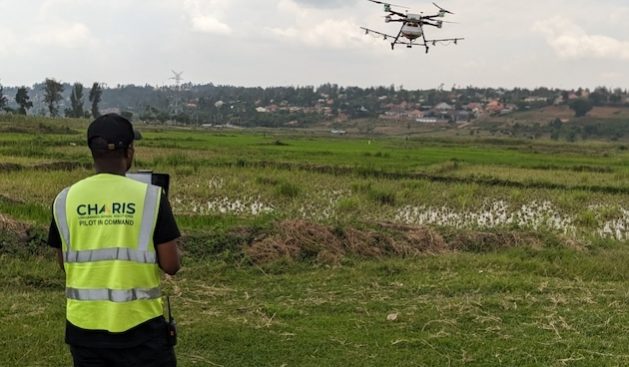Proven Vector Control Interventions Needed to Stem Malaria Infections in Africa

KIGALI, Feb 08 (IPS) - Experts recommend that the current prevention of malaria in highly endemic countries in Africa should integrate "locally appropriate" control measures to cope with the highest burden of mosquito-borne disease on the continent.
The latest 2023 World Malaria Report shows that the life-threatening disease remains a significant public health challenge, with both malaria incidence and mortality higher now than they were before the start of the COVID-19 pandemic on the African continent.
According to a World Health Organization (WHO) report, the effects of climate change and other issues pose a threat to the advancement of the disease-fighting effort.
Official statistics show that the African region disproportionally bore the brunt of the malaria burden in 2022, accounting for 94 percent of global malaria cases and 95 percent of all malaria deaths, which were estimated at 608,000, a nearly 6 percent increase since 2019.
WHO's Africa office's Tropical and Vector Borne Disease Lead, Dr. Dorothy Fosah-Achu, told IPS that vector control interventions in Africa have remained challenged, with bednets being one of the most effective vector control tools the continent is relying on.
“Most endemic countries are adopting new treated bednets to replace those having the issue with resistance, but these improved nets are more expensive, which makes it challenging for countries to cover large zones using this intervention,” Fosah-Achu said in an exclusive interview.
The latest WHO report on malaria places a special focus on climate change as a critical factor threatening progress in the fight against malaria. Climate-related disruptions, such as extreme weather events, may have exacerbated the spread of the disease.
Alongside climate change, other issues are threatening efforts to fight malaria.
The funding gap has grown, the report says. "Total spending in 2022 reached USD 4.1 billion—well below the USD 7.8 billion required globally to stay on track for the global milestones of reducing case incidence and mortality rates by at least 90 percent by 2030 (compared with a 2015 baseline)." This funding would include both control, diagnosis, preventative therapies, and treatment.
Growing resistance to available control tools, such as insecticides and antimalarial drugs, remains an increasing concern.
According to experts, most African countries do not have enough bednets. They do have insecticides that can be used to spray homes at breeding sites, but those interventions are very expensive.
While the high proportion of the population without access to quality medicines for malaria in Africa continues to be another issue, Fosah-Achu is convinced that the consequence of high mortality in Sub-Saharan Africa is also related to the limited health facilities and hospitals that provide access to treatment in a timely manner to the population living in remote zones.
In addition, health experts say that any success of antimalarial interventions in endemic countries in Africa will require appropriate coordination of efforts in terms of fighting against the resistance of vectors to insecticides and the resistance of parasites to medicines.
According to experts, another challenge is that endemic countries in Africa have technical capacity gaps because their national health facilities are not equipped with the right human resources who are able to manage programs and monitor some of these biological threats, such as vector resistance.
The latest estimates by the World Health Organization (WHO) show that in Africa, an estimated 233 million cases of malaria occur each year, resulting in approximately 1 million deaths. More than 90 percent of these are in children under five. Official statistics show that currently the African region bears the heaviest malaria burden, with 94 percent of cases and 95 percent of deaths globally, representing 233 million malaria cases and 580,000 deaths.
Dr. Ludoviko Zirimenya, a medical researcher at the Uganda Virus Research Institute (UVRI), told IPS that the changing climate across many endemic regions in Africa poses a substantial risk to progress against malaria.
“Africa is the most affected due to a combination of factors, the major one being climate change,” Zirimenya said.
In Rwanda, like other endemic countries across Africa, malaria is often found in rainy seasons, and meteorological factors and altitude are described by experts as the major drivers of malaria incidence on the continent.
Both Zirimenya and Fosah-Achu believe that the burden of malaria transmission on the continent can be reduced when countries put in place appropriate mechanisms to strengthen the data management system to ensure they have strong surveillance systems.
Public health experts observe that climate change is a growing issue, and countries in some endemic countries have little support to set up programmes to counter its impact.
The WHO report acknowledges this saying: "Equally crucial is the need to position the fight against malaria within the climate change/health nexus and to equip communities to anticipate, adapt to, and mitigate the effects of climate change, including the rise of extreme weather events. As you will see in the report, there are a range of actions—strategic, technical, and operational—that countries and their partners should begin to pursue now."
Currently, numerous interventions to control malaria have been implemented across many African countries, but experts note that the incidence of the killer disease has increased in recent years.
“There are financial capacity gaps to be filled by some countries. Most African governments still need to learn how to mobilize resources and ensure that programs deliver on the plans that they have developed themselves,” Fosah-Achu said.
Despite these challenges, there have also been achievements. Recent progress includes the launch of the first malaria vaccine, RTS,S/AS01, and the endorsement by WHO of a second vaccine, R21/Matrix-M. Additionally, the use of new dual-active ingredient insecticide-treated nets and expanded malaria prevention for high-risk children have been crucial advancements, offering new avenues for combating the disease.
IPS UN Bureau Report
Follow @IPSNewsUNBureau
Follow IPS News UN Bureau on Instagram
© Inter Press Service (2024) — All Rights ReservedOriginal source: Inter Press Service
 Global Issues
Global Issues